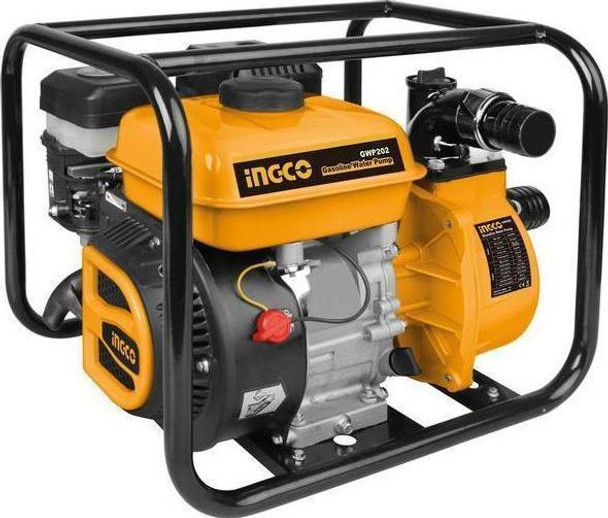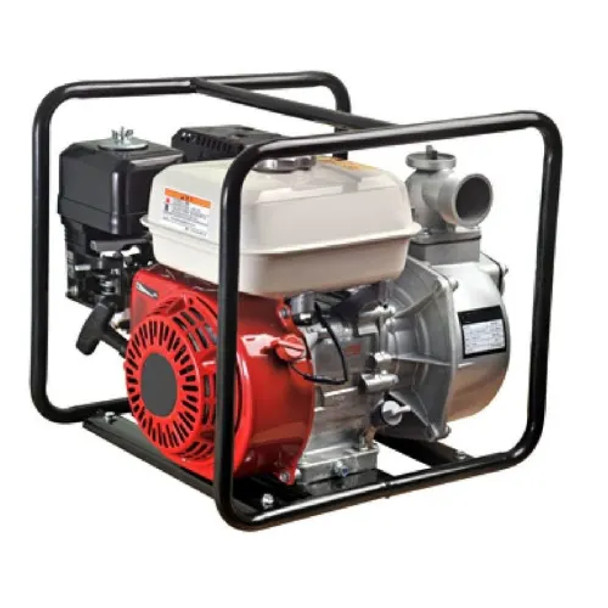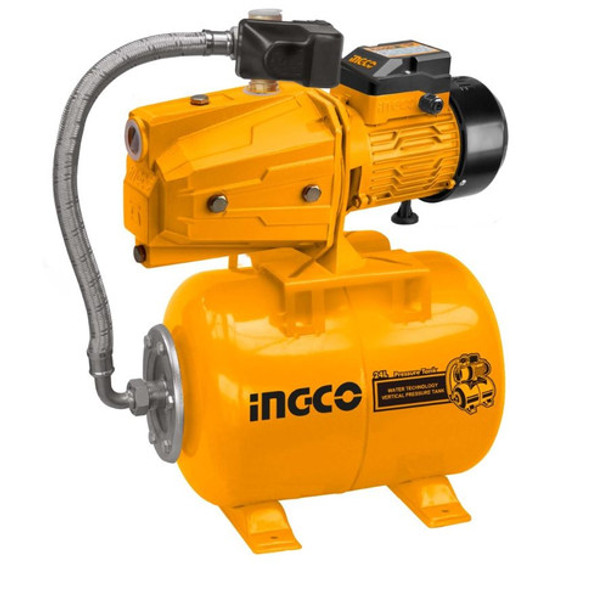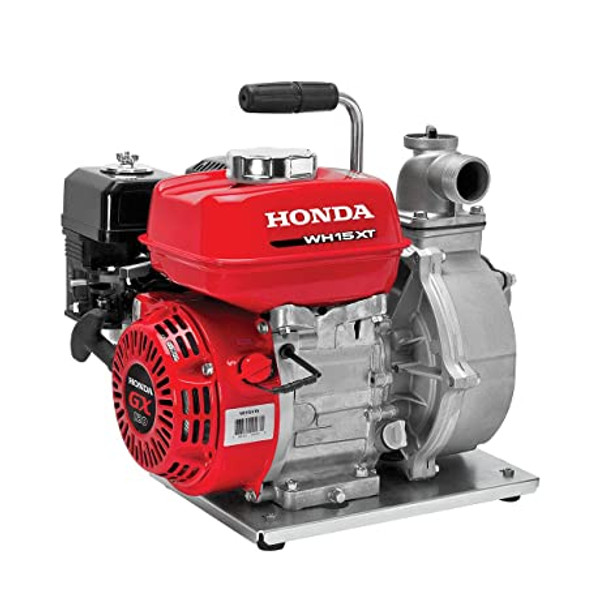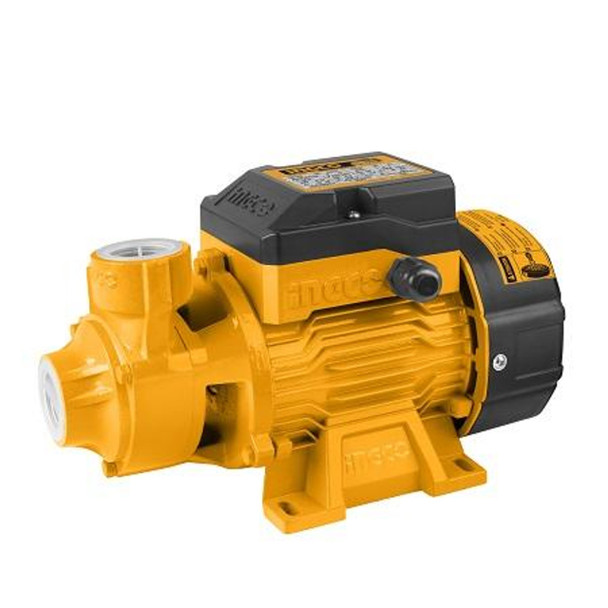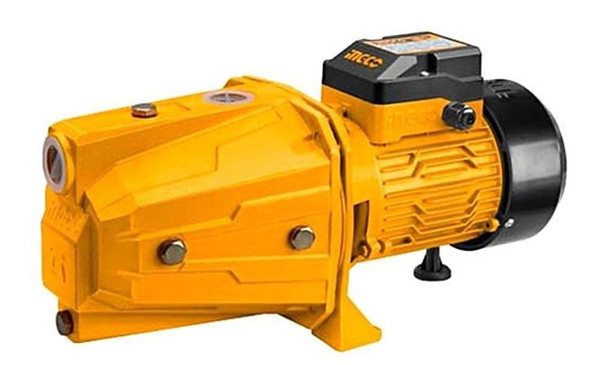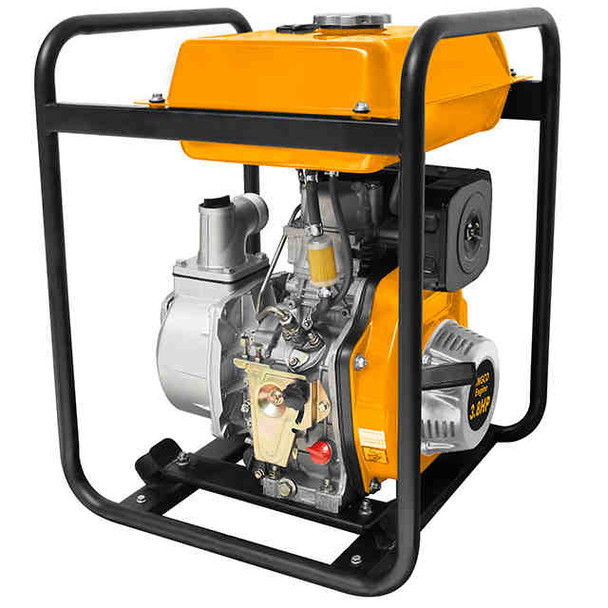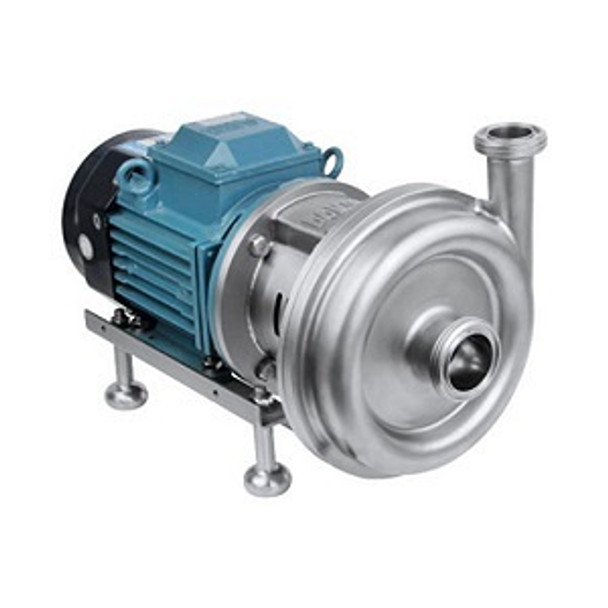Pumping Solutions for Agriculture: Water Pumps for Farming
Water pumps have become integral to modern agriculture, playing a crucial role in ensuring the efficient and sustainable use of water resources in farming operations. Water is the lifeblood of agriculture, and without a reliable means of moving and distributing water, crop production and livestock maintenance would be severely limited. The importance of water pumps in agriculture cannot be overstated, as they are instrumental in providing the essential resource that nurtures crops, sustains livestock, and ultimately drives agricultural productivity.
Buy Online INGCO Gasoline Water Pump 2" GWP202
One of the primary functions of water pumps in agriculture is irrigation. By delivering water to fields and orchards, farmers can ensure that their crops receive the moisture they need to thrive, even in regions with erratic rainfall patterns. Water pumps also enable precise control over irrigation, optimizing water usage and promoting crop health and yield. Beyond crop cultivation, water pumps also play a pivotal role in ensuring the well-being of livestock. Whether for drinking water or maintaining the conditions of aquaculture systems, water pumps guarantee a reliable water supply for animals, which is essential for their growth, health, and productivity.
In certain agricultural regions, frost can be a significant threat to crops. Water pumps are used to circulate water through irrigation systems during cold nights, creating a protective ice layer that insulates sensitive plants from freezing temperatures, safeguarding the harvest. Agriculture can face challenges such as excess rainwater or flooding. Water pumps aid in dewatering fields and managing excess water, preventing waterlogging and crop damage. Precision agriculture relies on water pumps to deliver liquid fertilizers and nutrients to crops precisely. This ensures that crops receive the necessary nutrients at the right time, promoting healthy growth and minimizing waste.
In this comprehensive guide, we will delve into the world of water pumps designed specifically for farming, exploring their diverse types, applications, and the considerations that are vital for ensuring success in agricultural endeavors. We will discuss various aspects related to water pumps in agriculture, equipping farmers, agricultural professionals, and enthusiasts with the knowledge and insights needed to make informed decisions regarding the selection, installation, and maintenance of water pumping solutions tailored to their specific needs.
Buy Online Honda Gasoline Water Pump 3" GWP-4020729
Types of Water Pumps for Agriculture
Water pumps come in various types, each designed to cater to specific agricultural needs. In this section, we will explore four key types of water pumps commonly used in agriculture and delve into how they work, their ideal applications, benefits, considerations, and maintenance.
Submersible Pump
Submersible pumps are designed to be submerged in the water source they are pumping from. They operate by pushing water to the surface through a hermetically sealed motor. As the pump is submerged, it prevents cavitation, which can damage conventional pumps. Submersible pumps are typically electric and come in various sizes and power capacities.
Ideal Applications in Agriculture:
Submersible pumps are ideal for a range of agricultural applications, including:
- Irrigation in wells, boreholes, or ponds.
- Dewatering flooded fields.
- Providing water for livestock in troughs or ponds.
- Maintaining consistent water levels in reservoirs.
Benefits and Considerations:
Benefits:
- Submersible pumps are highly efficient and require minimal priming.
- They are suitable for deep water sources and can lift water from significant depths.
- Their submerged nature prevents cavitation and reduces noise.
Considerations:
- Regular maintenance is necessary to prevent clogging and ensure longevity.
- The electric components require proper waterproofing and protection.
Buy Online... Water Pump INGCO JPT07508
Centrifugal Pumps
Centrifugal pumps work on the principle of centrifugal force, where a rotating impeller inside the pump casing forces water outward, creating a flow. This type of pump is widely used in agriculture due to its simplicity and effectiveness.
Agricultural Uses and Advantages:
Centrifugal pumps find applications in various farming tasks, such as:
- Surface irrigation in fields.
- Flood control and drainage.
- Transferring water between containers or ponds.
- Circulating water in cooling systems.
Factors to Consider When Using Centrifugal Pumps:
- Centrifugal pumps may struggle with lifting water from deep sources and are more suitable for shallow water bodies.
- Proper priming is essential to avoid cavitation.
- Regular maintenance, including checking for clogs and ensuring seals are intact, is crucial for continued reliability.
Diaphragm Pumps
A diaphragm pump is a type of positive displacement pump that uses a flexible membrane, called a diaphragm, to move fluid. The diaphragm is sealed between two chambers and moves back and forth under the pressure of the fluid. The fluid enters one chamber through a valve and exits the other chamber through another valve. The diaphragm pump can handle viscous, abrasive, or corrosive fluids and can operate at high pressures and speeds.
Applications in Agriculture:
Diaphragm pumps are known for their versatility and can be used in agriculture for various tasks, such as:
- Chemical or fertilizer injection.
- Pest control through pesticide or herbicide application.
- Water transfer and circulation.
Advantages and Limitations:
Advantages:
- Diaphragm pumps are self-priming and can handle a wide range of viscosities.
- They offer precise flow control and are suitable for metering applications.
- Their robust construction allows them to handle abrasive and corrosive fluids.
Limitations:
- Diaphragm pumps can be energy-intensive.
- Careful selection and maintenance are crucial, as different diaphragm materials are required for different applications.
Maintenance Tips for Diaphragm Pumps:
- Regularly inspect diaphragms and valves for wear and tear.
- Ensure proper lubrication and clean any clogs or debris from the system.
- Monitor the condition of diaphragm material to prevent chemical degradation.
Buy Online... Honda High Pressure Centrifugal Water Pump 1.5", WH15
Solar-Powered Pumps
Solar-powered pumps utilize photovoltaic panels to convert sunlight into electricity, powering the pump. They are environmentally friendly and can be an excellent choice for off-grid or remote agricultural locations.
Sustainability and Cost-Effectiveness:
- Solar-powered pumps are sustainable and reduce reliance on fossil fuels or the grid.
- They have low operational costs once the initial setup is in place.
- These pumps are especially valuable in areas with ample sunlight.
Installation and Maintenance:
- Proper installation and positioning of solar panels are crucial for efficiency.
- Routine checks of solar panels and the pump's electrical components are essential.
- Battery maintenance and replacement should be part of the regular upkeep.
These various types of water pumps in agriculture cater to different needs and can greatly enhance farming operations. Selecting the right type of pump depends on factors such as water source, application, and available resources. Regular maintenance and proper use are key to ensuring the longevity and efficiency of these pumps in agricultural contexts.
Selecting the Right Water Pump for Your Farm
The selection of the right water pump for your farm is a pivotal decision that can significantly impact the overall efficiency and success of your agricultural operations. To make the best choice, you need to carefully assess your water needs, calculate flow rates and pressure requirements, match the pump to your specific agricultural application, and consider factors related to energy efficiency and power sources. Let's delve into each of these aspects in detail.
Assessing Your Water Needs
Water Source and Availability:
The first step in selecting a water pump for your farm is to evaluate your primary water source. Determine whether your water supply comes from a well, borehole, pond, river, or a municipal water source. Understanding your water source is crucial as it influences the type of pump you need.
Water Demand Analysis:
Calculate your farm's total water demand. This involves considering the irrigation needs of your crops, water requirements for livestock, as well as any other applications such as cleaning, cooling, or industrial processes.
Differentiate between peak and average water demand. The pump you choose should be capable of meeting peak demand during crucial irrigation periods or other high-usage events.
Geographical and Topographical Factors
Calculating Flow Rates and Pressure Requirements
Flow Rates:
To determine the required flow rate for your farm, you'll need to consider the type of irrigation system you use, the size of your fields, and the method of water distribution. Different crops have varying water requirements. Additionally, think about the duration and frequency of irrigation. Some crops need more frequent watering than others.
Pressure Requirements:
Pressure is crucial for certain irrigation methods, such as sprinklers and drip systems. Calculate the necessary pressure to ensure effective water distribution. Factors such as the type of crops you grow and their specific water requirements will influence the required pressure levels. The choice of irrigation system also plays a critical role.
Buy Online... Peripheral Pump 0.5HP INGCO VPM3708
Matching the Pump to Your Specific Agricultural Application
Selecting the Right Type of Pump:
Review the various types of water pumps available for agricultural use, including submersible pumps, centrifugal pumps, diaphragm pumps, and solar-powered pumps. Choose the type that aligns with your farm's specific needs and water source. The right pump type should be compatible with the characteristics of your water source and the requirements of your irrigation and water distribution systems.
Pump Size and Capacity:
Once you've determined the required flow rates and pressure levels, ensure that the pump's size and capacity match these requirements. Oversized or undersized pumps can lead to inefficiencies and increased operational costs. The pump's capacity should be a close match to your calculated water demand to ensure reliable performance.
Additional Features and Considerations:
Depending on your agricultural application, consider any additional features or components that may be required. This could include filters, control systems, or backup power sources. The specific needs of your farm will determine the inclusion of these features. For instance, in precision farming, you might need advanced control systems to manage water distribution accurately.
Considering Energy Efficiency and Power Sources
Energy Efficiency:
Evaluate the energy efficiency of the water pump you plan to install. More efficient pumps can lead to significant savings on energy costs in the long run. Also, look for pumps with high motor efficiency ratings and low energy consumption to minimize the environmental and financial impact of pump operation.
Power Sources:
Choose an appropriate power source for your pump. Common options include electric, diesel, gasoline, or solar power. The choice should align with your farm's power availability, environmental considerations, and long-term cost-effectiveness. For off-grid farms or those looking to adopt sustainable practices, solar-powered pumps offer a clean and renewable energy source.
Backup Systems:
It's prudent to have a backup power source or generator in case of power outages, especially during critical irrigation periods. This ensures that your agricultural operations can continue even when the primary power source is unavailable. Backup systems can prevent crop and livestock losses due to water shortages and maintain the overall continuity of your farm's activities.
Buy Online Jet Pump 1HP INGCO JP07508
Installation and Maintenance of Water Pump
Proper installation and maintenance of your water pump are critical to ensuring its longevity, efficiency, and trouble-free operation. In this section, we'll explore the key aspects of installation and maintenance, including proper installation techniques, routine maintenance practices, troubleshooting common issues, and strategies to extend the lifespan of your water pump.
Proper Installation Techniques
- Select an appropriate location for your water pump. It should be close to the water source to minimize suction head and should be secure and sheltered from environmental elements.
- If your pump is electric-powered, ensure that electrical connections are made by a qualified electrician. Proper wiring, grounding, and the use of suitable electrical components are essential for safety and reliable operation.
- Install the necessary plumbing and pipelines to connect your pump to the water source and distribution system.
- Properly size the pipes to minimize friction losses and pressure drops.
- Follow the manufacturer's instructions to prime the pump, ensuring that the pump and suction line are filled with water before starting the pump.
- If your pump is not submersible, it should be mounted on a stable foundation to reduce vibration and noise. Use vibration-absorbing materials and ensure that the pump is level and properly anchored.
Buy Online Diesel Water Pump INGCO GEP302
Routine Maintenance Practices
- Implement a schedule of routine inspections to identify any issues early. Check for leaks, unusual noises, and visible signs of wear or damage.
- If your pump requires lubrication, make sure it is properly lubricated according to the manufacturer's recommendations. Over or under-lubrication can lead to premature wear.
- Clean the intake screen or filter regularly to prevent clogs that can impede water flow and damage the pump. This is particularly important for surface water pumps.
- For pumps with belts, regularly check and adjust belt tension to ensure optimal performance. Loose or worn belts can reduce pump efficiency.
- Inspect seals and gaskets for any signs of leaks. Replacing worn or damaged seals is essential to prevent water leakage and maintain pump efficiency.
Troubleshooting Common Issues
Cavitation:
Cavitation occurs when the pump is not properly primed or when there is a restriction in the suction line. It can damage the pump impeller and reduce performance. Ensure the pump is properly primed and inspect the suction line for blockages or leaks.
Airlock:
Airlock can prevent water from flowing into the pump. To resolve this issue, bleed air from the system or check for obstructions in the intake line.
Overheating:
Overheating can occur if the pump is run continuously without adequate cooling or if the motor is overloaded. Ensure the pump operates within its rated capacity and take breaks to prevent overheating.
Loss of Pressure:
A sudden loss of pressure may indicate a damaged impeller, worn-out seals, or a clogged intake. Inspect and replace any damaged components and clean the intake screen or filter.
Extending the Lifespan of Your Water Pump
- Choose a pump that is appropriately sized for your water demand. An oversized pump may cycle on and off frequently, leading to premature wear.
- Operate the pump within the manufacturer's recommended specifications. Avoid overloading the pump, which can lead to overheating and reduced lifespan.
- Adhere to a rigorous maintenance schedule, conducting inspections, lubricating moving parts, and cleaning components as necessary. Regular maintenance helps prevent issues before they become major problems.
- Use high-quality components, such as seals, gaskets, and belts, and replace them when they show signs of wear. Quality components contribute to the longevity of your pump.
- Protect your pump from harsh environmental conditions, such as extreme temperatures, corrosive substances, and physical damage. Proper housing and protection can extend its lifespan.
Buy Online... Hygienic Food Centrifugal Pump with Motor 3A Hellog
Conclusion
It is abundantly clear that water pumps are the unsung heroes of modern agriculture. They serve as the lifeblood of farming operations, ensuring the efficient distribution of water to nurture crops and provide for livestock. Water pumps are instrumental in mitigating the impact of water scarcity, facilitating irrigation, and enabling farmers to diversify their agricultural activities. The role of water pumps in promoting the growth of high-yield crops and ensuring the health and productivity of livestock cannot be overstated.
This comprehensive guide has aimed to empower farmers, agricultural professionals, and enthusiasts with the knowledge and tools necessary to make informed decisions when it comes to selecting, installing, and maintaining water pumps for their specific agricultural needs. We have explored the critical aspects of assessing water requirements, calculating flow rates and pressure requirements, and matching the right pump to your application, considering both energy efficiency and power sources. Armed with this knowledge, farmers can optimize their water supply and enhance the overall efficiency of their farming operations.
As we conclude this guide, we encourage all stakeholders in agriculture to recognize the vital role of water pumps, the importance of informed decision-making, and the imperative of adopting sustainable and efficient water pumping practices. By doing so, we can ensure the resilience, productivity, and sustainability of our agricultural systems, ultimately contributing to a more food-secure and environmentally responsible future for farming. Water pumps are the backbone of agriculture, and their proper management and utilization are key to the ongoing success of this vital industry.
Related Articles
Types of Agricultural Machinery and Their Uses
HOW TO RESOLVE WATER PUMP FAILURE
DIFFERENT TYPES OF WATER PUMP AND THEIR APPLICATION
Recent Posts
-
Understanding Metal Properties and Their Impact on Welding Success
Specific Metal Characteristics Matter: Each metal's unique properties such as thermal conductivity …Apr 30, 2024 -
The Ultimate Guide to welding and fabrication services in Nigeria
Welding and fabrication plays a vital role in Nigeria's economic development. These services are fun …Apr 30, 2024 -
Dongcheng Rotary Hammer: A Comprehensive Guide for Contractors
Key takeaway;The DongCheng Rotary Hammer serves as an invaluable resource for contractors seeking to …Apr 26, 2024


